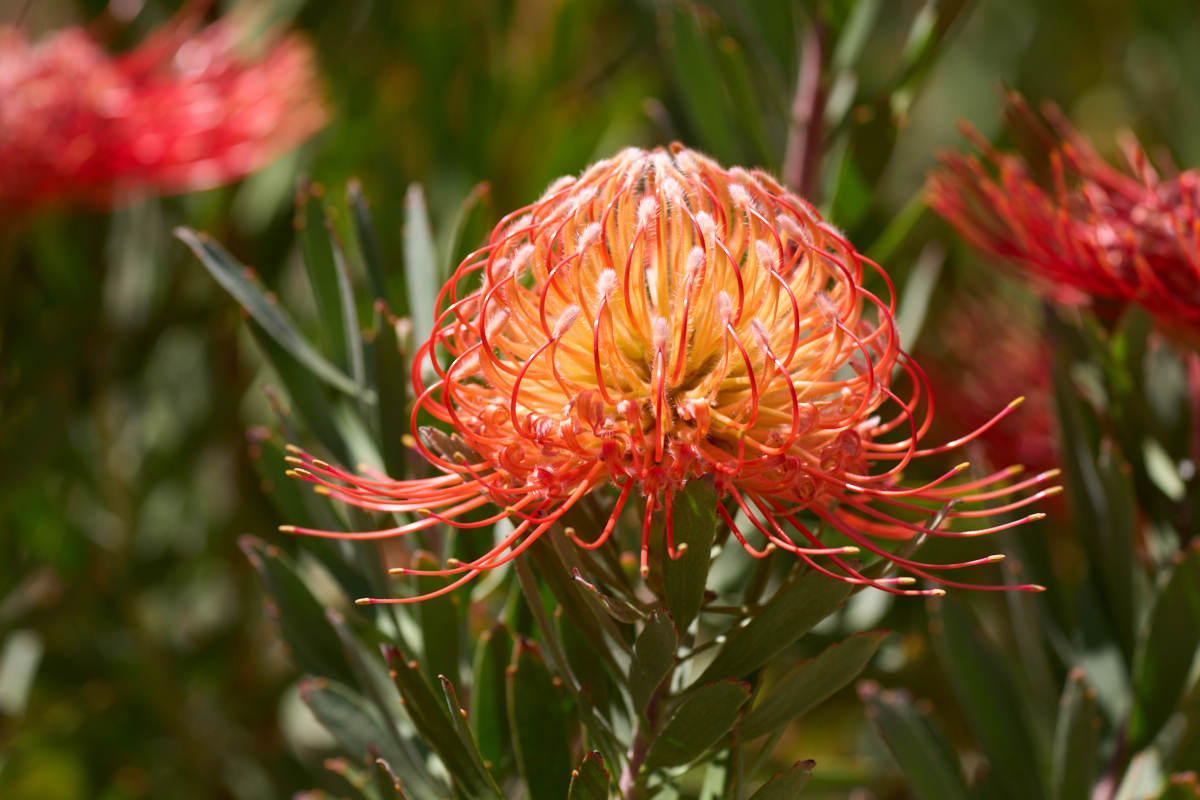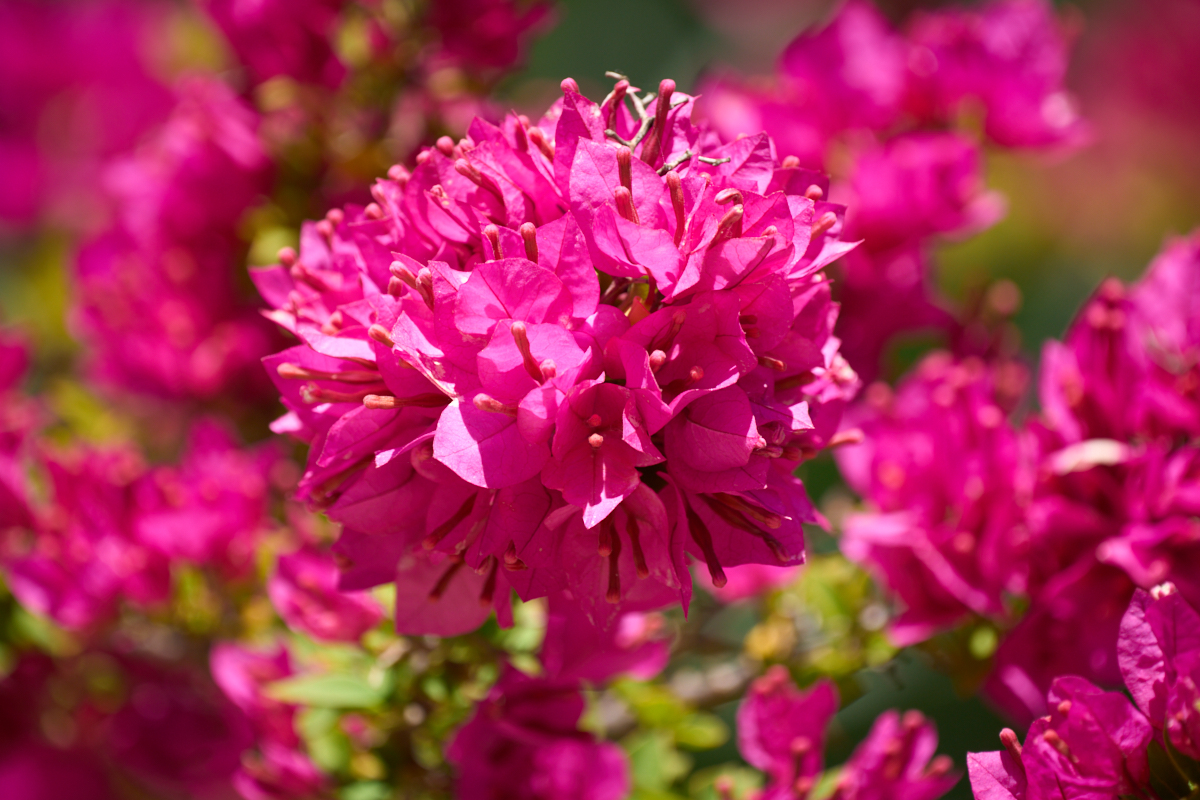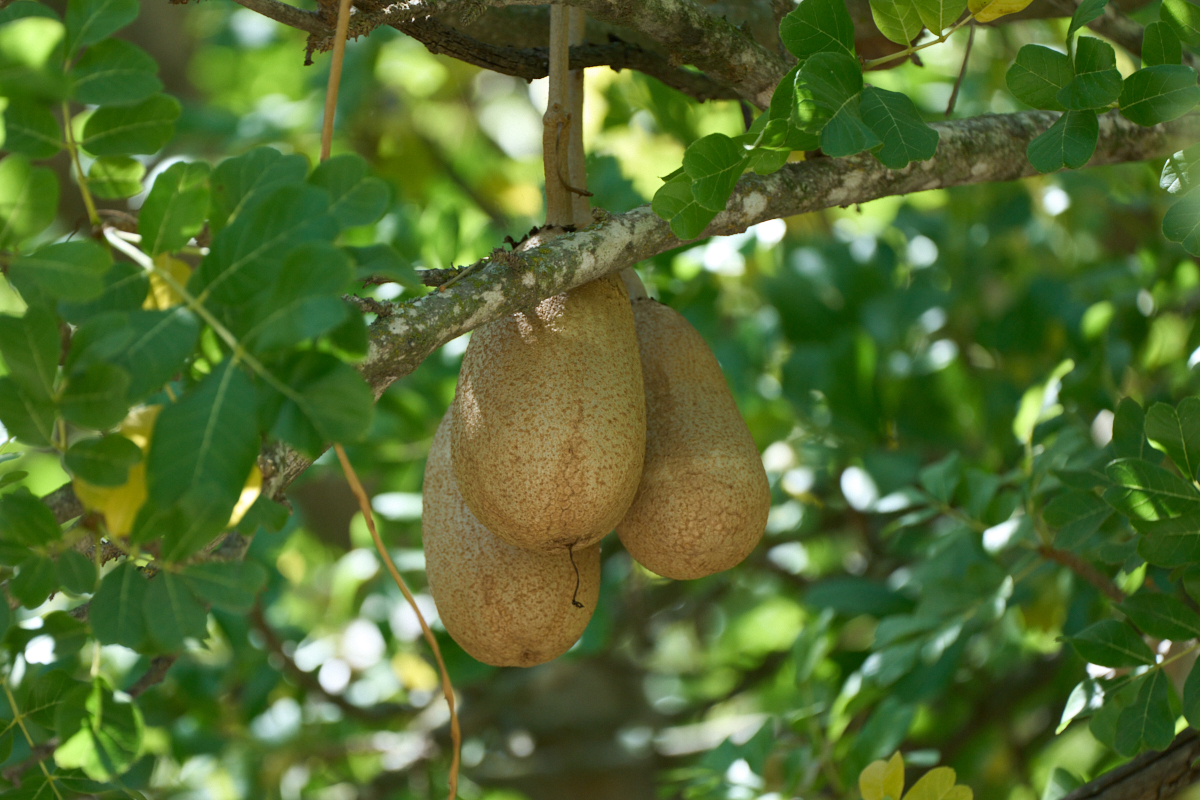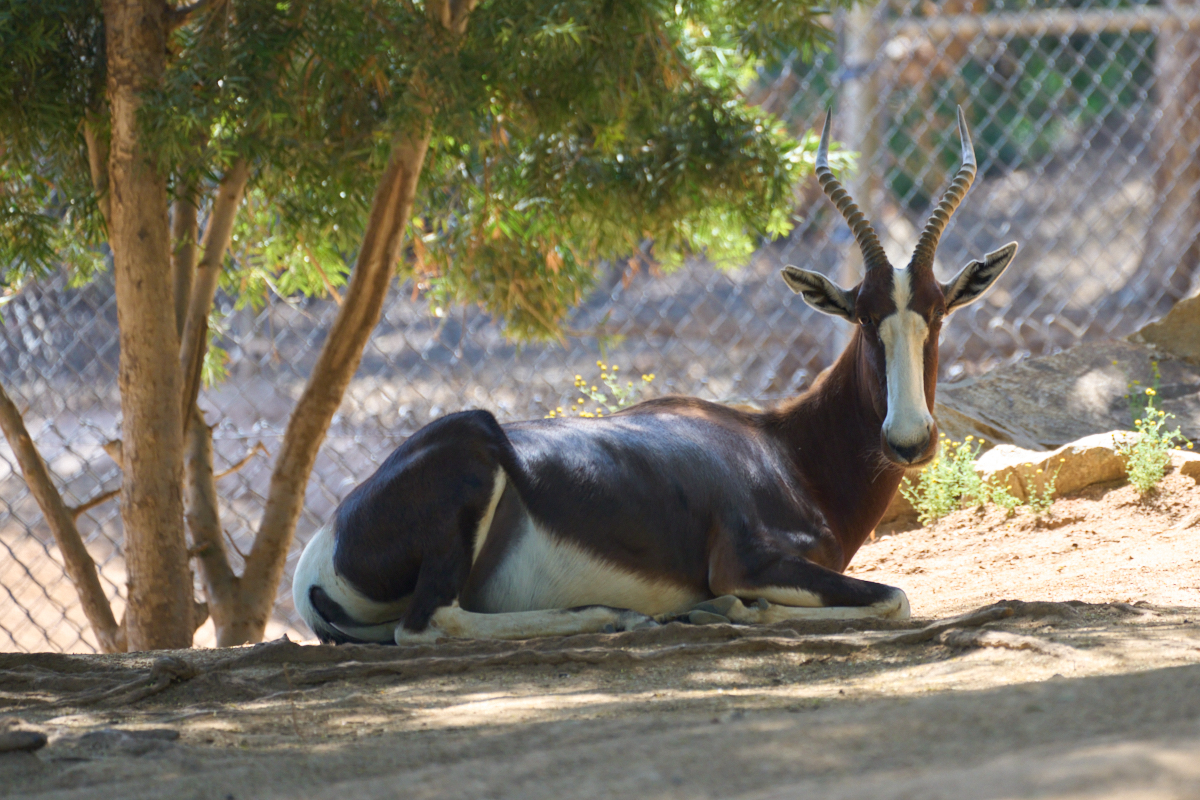
The photos below are what we saw.

Birds
are cool and hummingbirds are particularly cool. We have a
feeder in our back yard and the local hummers come
regularly. This fellow is a regular and he likes to drink
sitting on the bar. Note the feet extended for landing.

A pair
of doves decided that our canopy was a great place for a
nest. This is their second year at this nest and I caught
them as the parents were switching "sitting duties". The
doves see us frequently enough that they are not afraid of us,
at least while they are nesting.

We drove
the 30 or so miles to the Safari Park and encountered this nice
Ice Plant bloom in the parking area.

It has
been a few years since we had been at the Safari Park and I had
forgotten how many species of birds they have at the park.
This is some sort of Swan that is doing what birds do
best: preening.

Birds,
it seems, when they have nothing better to do spend their time
preening. Look at the bill on this fellow.

This
bird was spotted in a pond area, wading around. He was
big, the size of a medium turkey.

The
flamingos were enjoying their flock, squawking and filtering the
muddy water.

This was
some kind of duck; very noisy and totally unafraid of people.
Note the big hole in his feathers in the chest area; not sure
what this was from.

Another
brightly colored duck swimming happily in the algae-infested
pond.

In the
center of another pond were a group of what appeared to be
Cormorants. Note the hooked bill on the fellow on the
right.

Some
"beaking" going on; I believe that the male was bringing a catch
back to the female sitting on the nest. Note the intricate
feather patterns on the bird on the right side of the photo
above.

All birds are twitchy. They are in constant motion. The Sony A1's claim-to-fame is fast focus and a bird eye-finder. Note the reflection in this bird's eye. This photo is a crop-of-a-zoom at 400mm (about 800mm). I was very pleased.

This pelican
had a striped pouch.

The
camera did a good job of focusing through the wire mesh
enclosure. This is a bee eater.


There were a number of plants in full bloom. This bloom was particularly magnificent.




Interesting and dangerous spiral horns.
















| Previous Adventure | ||
| Trip Home Page |
Photos and Text Copyright Bill Caid 2021, all rights
reserved.
For your enjoyment only, not for commercial use.